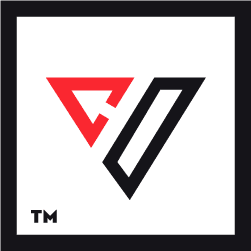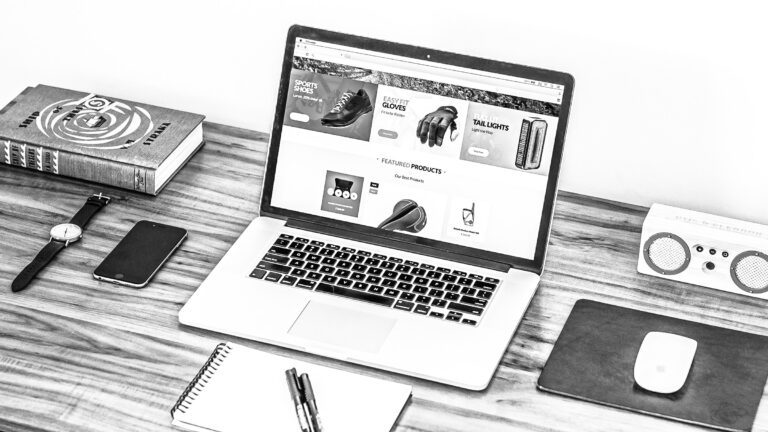In business, nothing happens by accident—every success results from a carefully calculated strategy, which includes website design. Website design consists of artistry, skill, experience, and well-developed processes.
For a web design agency, each new website unveiled for clients is a mix of anticipation and celebration. It results from many weeks and months of brainstorming, brand building, marketing strategy, digital strategy, consumer and competitor research, internal discussions, and more.
Why the tremendous amount of planning?
Simple—without adequate preparation, there is no way to know if the website is well-equipped for traffic and the purchase of products and services. That is why only forward-thinking startups prevail. They understand that success is a result of carefully calculated moves resulting from understanding key metrics, conversion optimization, the latest trends, effective communication, search engine optimization, and more.
To design a brilliant website, and increase website traffic, you need carefully-written code and beautifully-crafted design from a team of web designers, business analysts, and software development engineers.
Let’s explore this in further detail.
Brand & Website Discovery
So, your brand is interested in building a website and working with a website design agency. This is excellent news. There is truly no better time to start.
A website establishes credibility, helps you have a solid first impression, and build trust with consumers. A website helps create brand awareness and showcase your brand to prospective customers. It helps establish your image by letting your target audience know who you are, what you represent, and why they should care. A website provides reliable information to the consumers, which helps your business stand out from the competitors.
But, first thing’s first, you can’t even begin to brainstorm a new website until you understand your brand itself.Brand discovery is an essential component of the branding process. You construct and differentiate your company’s mission, visual presentation—color palette, graphic design, logo design—and products and services.
This stage includes:
- aligning your brand identity with your company objectives,
- creating your brand identity and communicating it to your target market via social media marketing and a robust digital strategy, and
- updating or strengthening your brand identity over time, as necessary.
You will ensure that customers become loyal by taking the necessary time to develop a strong brand identity. You win, beat the competition, and guarantee that consumers understand your brand and consume the right story from your packaging, website, employees, advertising, and products.
The key here is to determine your why and align all actions around that vision. This includes bringing together your content marketing team, web developers, graphic design team, social media marketing team, project managers, and digital strategists around this shared vision. Your beautiful website must also showcase the quality work and industry experience of your team and the various services you provide and include a personalized approach, so consumers feel a meaningful emotional connection.
In short, your website must tell a story.
The best web design agency offers this as a comprehensive BrandBuild™ service. This ensures your voice is heard and your vision is understood and carefully implemented. Let’s discuss what a consultation with one of the top web design agencies would look like.
Consultation & Goal Setting
A website consultation with a web design agency typically consists of a formal review of your
- current brand,
- current website,
- digital marketing efforts,
- website traffic,
- website design,
- graphic design,
- any open web design projects,
- digital strategy,
- content marketing,
- marketing strategy,
- social media marketing,
- coalition technologies,
- conversion optimization,
- competitive advantage,
- organic traffic,
- UI design,
- UX design,
- number of website visitors over just a few days,
- content management system, and more.
The goal of a web design agency is to understand your entire process from start to finish. This will help the web design agency determine the best course of action, from refining internal processes to implementing new content management systems and kicking off a website refresh, overhaul, or its creation.
During a consultation, it’s essential to remember that you are the visionary. You must also understand that the individuals who craft your website are meant to help your brand generate leads and conversions, ultimately increasing revenue and expanding your business. Even the top web design agencies ranked have certain limitations. That said, you want to ensure that, at their core, their digital marketing services are on par with their software development. These two go hand-in-hand when telling your brand story and crafting a solid brand strategy.
If the consultation goes well, the web design agency should take time to understand or develop your goals—the incremental achievements that bring you closer to your vision. They should set deadlines and keep to them, always. This is a sign that they understand the importance of reaching your vision and take you seriously.
Project Planning
After selecting the best partner from many web design agencies, you will begin with project planning. This includes the obvious—an introduction to your web designers, software development team, digital strategy team, content marketing team, and project manager. From there, the project planning will commence. This is typically done externally by the web design agency, but it all depends on their and your individual preference.
Some development agencies prefer to lead the web design and development process with you in a position of approval. Other web design and development agencies prefer for the client, you, to take a more active approach in your new project. Depending on your preference, you can be heavily involved or leave it to the pros. Whichever option you choose, with the right partner, you’ll find quality work and a great website.
Project planning includes the end vision and the more gradual goals leading up to it. It includes deadlines, internal and external reviews, brainstorming sessions, performance analysis, and more. It is the roadmap that brings success.
In the case of the web design process, in particular, project planning includes outlining the lead software developers and building a detailed user flow, considering the user experience, user interface, and design elements. Not to mention, consideration for necessary servers, integration tools, and other components must be taken into account. Each of these plays an essential role in developing a top-line website, whether it be a brand portfolio, storefront for eCommerce businesses, or education and employment site.
Let’s explore the user flow and roadmap in further detail.
User Flow & Roadmap
The user flow is the information you provide about your business when creating an outline of your website, the pages you want to include, and any subcategories you want to build out. This is known as creating a sitemap.
An optimized user flow via a sitemap is the best way to guarantee that search pages view your site and direct qualified leads and queries to your products and services. This is not to say that Google won’t consider your site without a sitemap—it will—but it may not focus on the most important pages—your service-based conversion pages. Instead, you’ll face the wrath of other companies in your industry and have a more challenging time communicating your brand identity to your audience
.Building a roadmap and user flow is no easy feat. It is not something to overlook and must be carefully crafted by an experienced web development and design agency. They understand the little nuances and can paint a picture of your target consumer, what matters to them, why they would be compelled to visit your website and build a roadmap, a story around that. This guarantees that your consumer will have a pleasant site experience and will return.
Let’s break the web design process into two stages—the actual web design and website development. We’ll explore the details of what falls into each stage in the coming sections.
Web Design
The web design stage can also be viewed as the graphic design stage—creating not only the visual and written elements for the brand’s website but also considering the user interface and user experience (UI/UX). It is the stage where you consider what each button on the user interface will do, where it will take the consumer, and what they will see when they arrive there.
An agency will enlist the help of many graphic designers, an art director, animator, multimedia specialist, and other creatives based on the client’s—your—particular needs and desires. If you’re interested in incorporating moving elements into your site, such as gifs or short-form videos, you’ll need to consider that now as you prepare to showcase the necessary content capacity to the software development team.
Once the web design team understands the entire website, its visual components, and user experience, they’ll begin the design mock-ups for the website development team.
Design Mock-Ups
A graphic design mock-up is a static web page or application design built by a graphic designer or art director that features many of their final design elements intended for the web design project, but is not functional. It’s a visual representation. A mockup is not as polished as a live page and typically includes some placeholder data.
Additionally, the design does not always perfectly match what is capable for website development and small adjustments are guaranteed later on in the process. The key here is to showcase as much information as possible to make the development process easy peasy.
Software developers are not responsible for the creative—they’re more technical and better-suited to offering suggestions and improvements for the user flow and site navigation. Graphic designers must be thorough in their mock-up, including instruction on how the user should interact with the webpage and what should be visible when.
Website Development
Stage two is website development. This includes writing code, including HTML, CSS, and JavaScript, hosting, integrating plug-ins and other elements that enhance the user experience, and building a store and shopping cart functionality if the site is for eCommerce businesses. Web development, in theory, can range from developing a simple static page of plain text to building complex web applications, such as social network services. It’s pretty incredible to think that coding can build massive social and internet-based platforms from the ground up, such as Facebook, LinkedIn, YouTube, and more.
Software developers must take the graphic designer’s vision and translate it into a functional web application for consumers to visit and interact with. This means building a responsive design with careful attention to detail.
Responsive Design
A responsive website includes a fluid and functional interface. Increasing site visitation, retention, and, ultimately, conversions is essential. After all, there’s nothing more frustrating for a consumer than to visit a website that won’t load fully, isn’t entirely functional or intuitive, and poses more hurdles than it’s worth. That’s one way to lose potential customers. Responsive websites are simply more successful.
There are many people who can help create a responsive design including
- web design agencies,
- web designers,
- web design companies,
- a digital agency,
- a website design agency,
- web design services,
- a graphic design agency,
- a digital design agency,
- a marketing agency,
- branding services,
- a content marketing team,
- eCommerce businesses,
- a branding agency,
- a digital strategist, and more.
A responsive website with an innovative design is essential because it offers an optimized browsing experience. Your brand’s landing pages will look stellar and function well on a desktop, tablet, and mobile devices. The best web agencies offer social media management, email marketing, UI design, coalition technologies, UX design, marketing campaigns, mobile app development, website design, digital strategy, digital marketing, and search engine optimization in addition to full-stack development.
SEO-Optimized Builds
A good website goes to waste without being built for search engine optimization. A good design and development agency will improve your search visibility with sites that include onsite SEO, search management, basic design, keyword research, SEO-friendly content, offsite SEO, and wireframe design. This way, you will start with an SEO-friendly site optimized for both the user and the explore page.
Search engine optimization improves the quality and quantity of traffic to a site or a web page from search engines. SEO targets unpaid traffic rather than direct traffic or paid traffic. A website that performs well in search engine optimization is more accessible because of its positioning on Google.
Search engine optimization is like a puzzle: you need all the pieces to see the bigger picture. This includes doing extensive keyword research and advanced wireframing. Design agencies understand the importance of each of these components and offer resources to create the best web experience possible. This forward-thinking mentality carries over to social media, mobile app development, and website design and development.
Testing & Launch
To prepare for launch, you must check off the final items on your list and ensure the site is running in its production environment before going live. Then, you need to resolve the issues that pop up afterward. Continually test the UI design and web design to measure how well the user experience is. Additionally, a quality assurance (QA) review should become a part of every code release.
QA includes tests to find “hard” and “soft” issues. Hard issues are things that are actually broken. Soft issues are things that aren’t broken but could improve the UI design and user experience. This distinction is essential to understand because consumers may flag something wrong with the website, and you need to decide if this is a “bug” or just a “change request.” Simply because someone wants something changed doesn’t mean you have to if it’s not an actual QA problem. You may decide to refine some components and optimize.
Ongoing Maintenance
Testing is ongoing, as is the improvement of UI design, digital products, and web development processes. This goes hand-in-hand with maintenance. Many web design agencies include continuing site maintenance in their web development package. They’ll keep your site up-to-date with the latest digital products and ensure your website stands out from other design agencies.
To design a brilliant website, and increase website traffic, you need carefully-written code and beautifully-crafted design from a team of web designers, business analysts, and software development engineers. The best design agencies understand that success is a result of carefully calculated moves resulting from adequate preparation.







